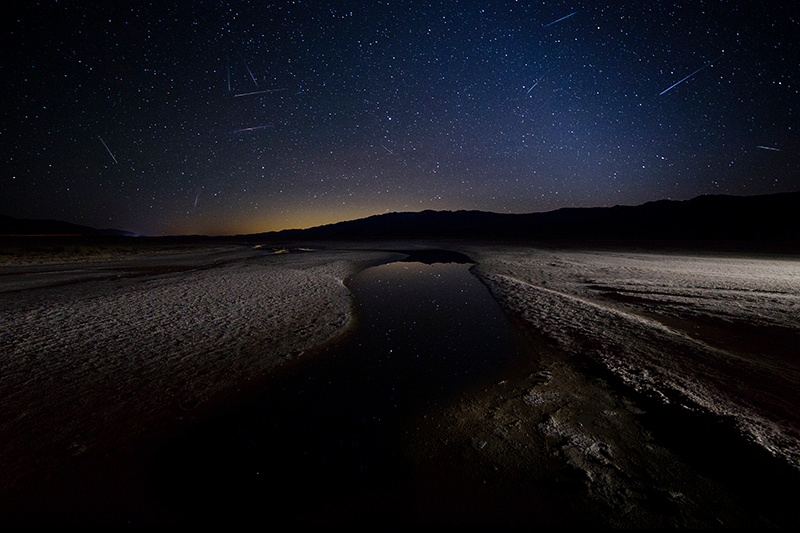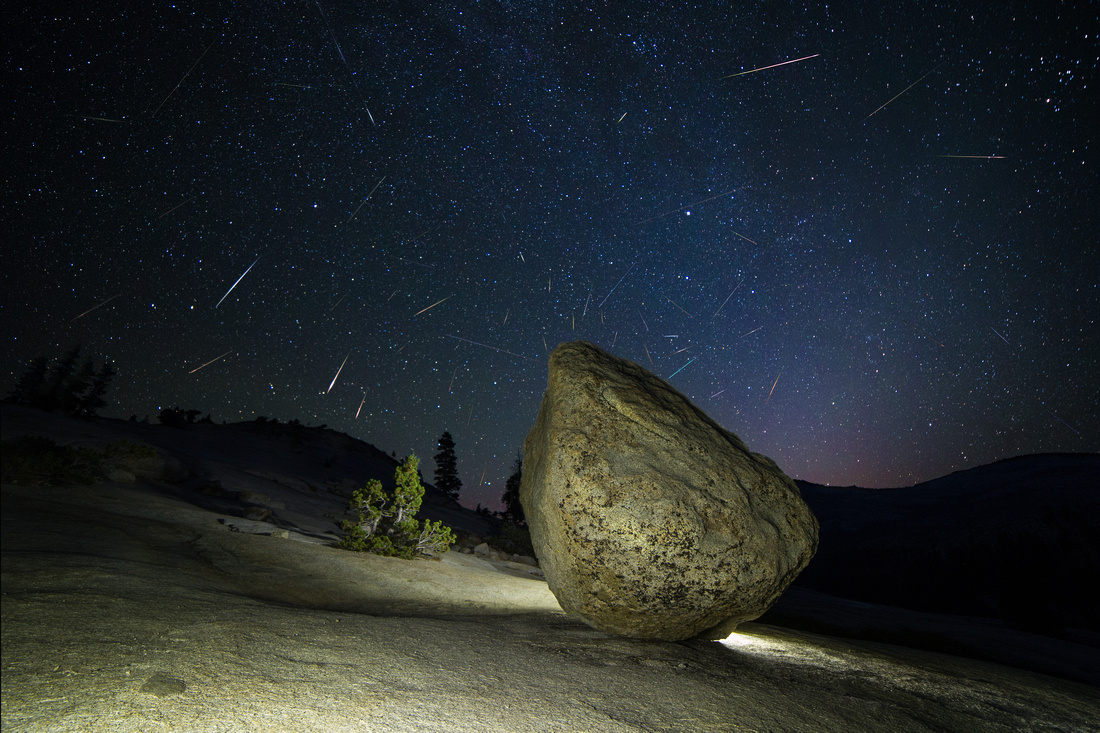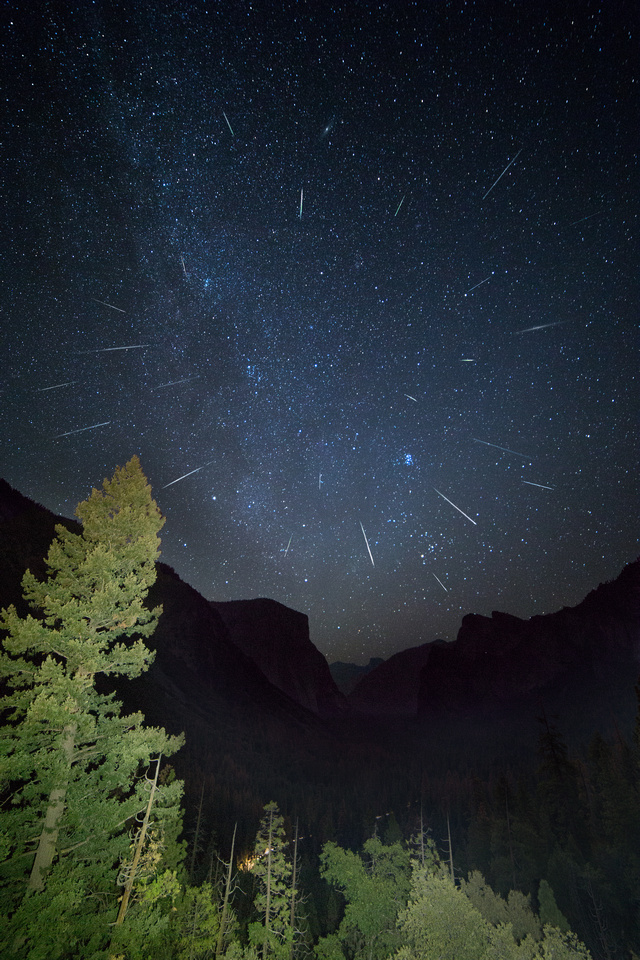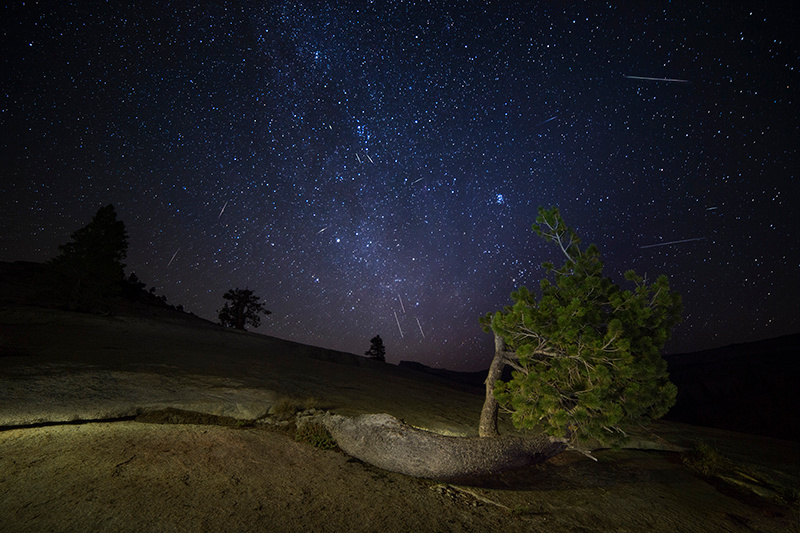Photographing Perseids Meteor Shower
2024: Perseids Meteor Shower
Text and photos by Heather Cline
The Perseids is considered to be the best Meteor Shower of the year due to the brightness, speed and high number of meteors that shoot through the sky during the peak period. It occurs annually when Earth passes through the debris trail left by Comet Swift-Tuttle. The shower is named after the constellation Perseus, from which their radiant is located. It has been observed for over 2,000 years.
Since the peak of this meteor shower is quickly approaching, I thought I'd share some information on viewing and photographing this exciting celestial event!
Determining When To Go
In 2024, Perseids started on July 14th and runs through September 1st, but the peak will occur between the night of Sunday August 11th and Early morning Monday August 12th. During the peak, you may see 90 or more meteors per hour. The number of meteors produced by this meteor shower rises gradually then falls off rapidly. The moon phase will be in its first quarter and 50% illuminated but it will set at midnight so viewing between midnight and before dawn is possible.
The shower appears to come from the constellation Perseus, hence the name. It will peak at roughly 68° above the horizon. To see the most meteors, the best place to look is not directly at the radiant itself, but at any dark patch of sky around 30–40° away from the radiant, where most meteors will be seen. The radiant is located at 57°N.
If you have the PhotoPills app, you can also use this to help you confirm the direction to look and set up for your shot.
 
Tree and Meteor Shower |
Finding A Dark Sky
Depending on where you live, finding a dark sky may be a multiple hour drive or a simple walk to your backyard. You can use this to help find a dark sky location: Light pollution map
 
Death Valley offers a dark sky for meteor showers |
Include A Foreground Subject
A meteor shower is an exciting event but shooting the sky without any additional context can leave your images looking flat. Take the time to research and scout a location with some foreground subject options. This can be anything that suits your interest. I am fan of natural elements such as trees, boulders, and Tufas, but you might want to incorporate manmade features such as a barn, old building, or car. A meteor shower opens all kinds of possibilities for creativity and interpretation.
 
A boulder makes a nice foreground subject - this is a stacked image showing the meteors captured during Perseids |
Camera Gear
- DSLR or Smart Phone
- Wide Angle Lens, between 14 mm and 24 mm
- Tripod
- Remote shutter
- Ability to take repeating, consecutive 30 second exposures. If you are using a smartphone, you can download apps to help accomplish this.
 
Perseids captured in Yosemite valley |
Camera Settings
- Focus: manually focus on infinity, take a test shot then zoom into your preview screen to verify the stars are sharp. If not, make minor tweaks to the focus and repeat process until satisfied. Tip: once this manual focus is set, tape the focus ring to avoid accidental bumping that might throw it off.
- ISO: 1600- 4000. I tend to start with a lower aperture then increase as needed. Using the Denoise feature in post process will help reduce grain for higher ISO settings.
- Aperture: as wide as your lens will allow, 2.8 or near this is ideal
- Shutter Speed: 20-35 seconds depending on your lens. You can use the 500 rule to calculate approximate shutter speed that will avoid capturing star trails. Divide 500 by the length of your lens in millimeters. The result is the maximum number of seconds you can keep your shutter open before star trails appear. This is just a guide and you should test and tweak until satisfied, much like with focusing.
- White Balance: 4000 degrees Kelvin
 
A stacked image showing meteors captured during Perseids |
Witnessing the Perseid meteor shower is a fun experience for both stargazers and photographers alike. Finding the right location with foreground interest and utilizing the right gear and settings will improve your experience and results. Once you have your camera set up, you can sit back and enjoy the meteors while your camera captures the cosmic show. Warm summer evenings make this a comfortable time of year to stargaze as well. So, as the Perseid meteor shower approaches, I encourage you to get out there and view this unforgettable celestial event!